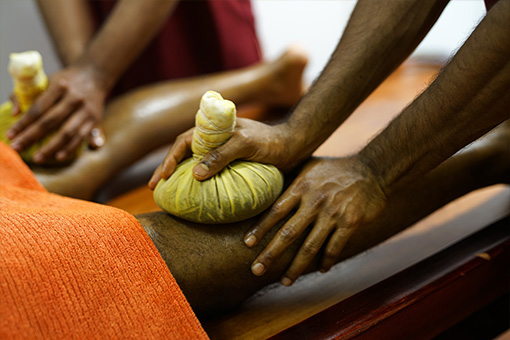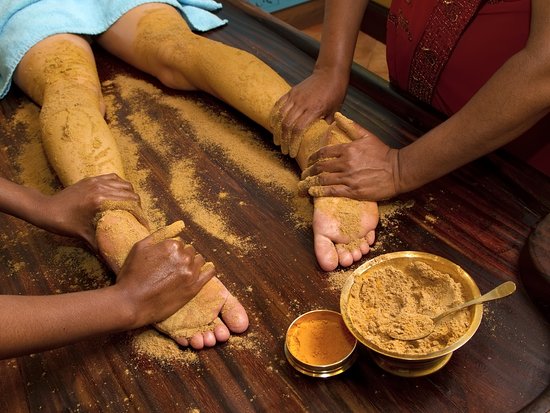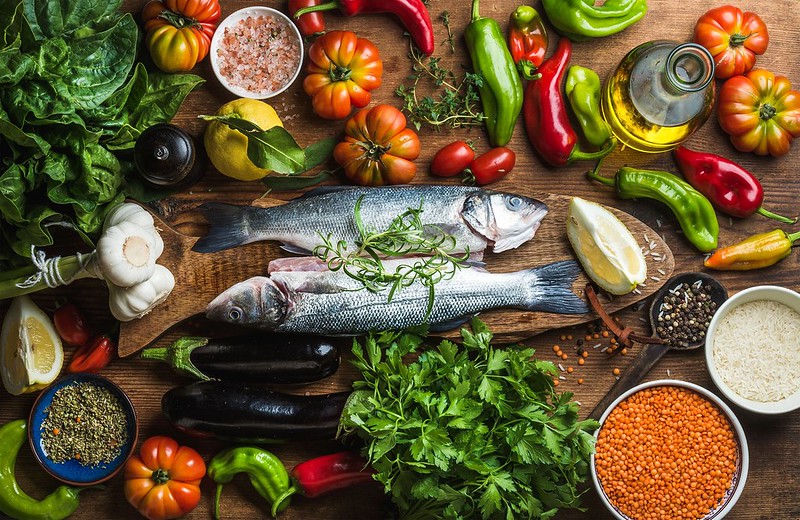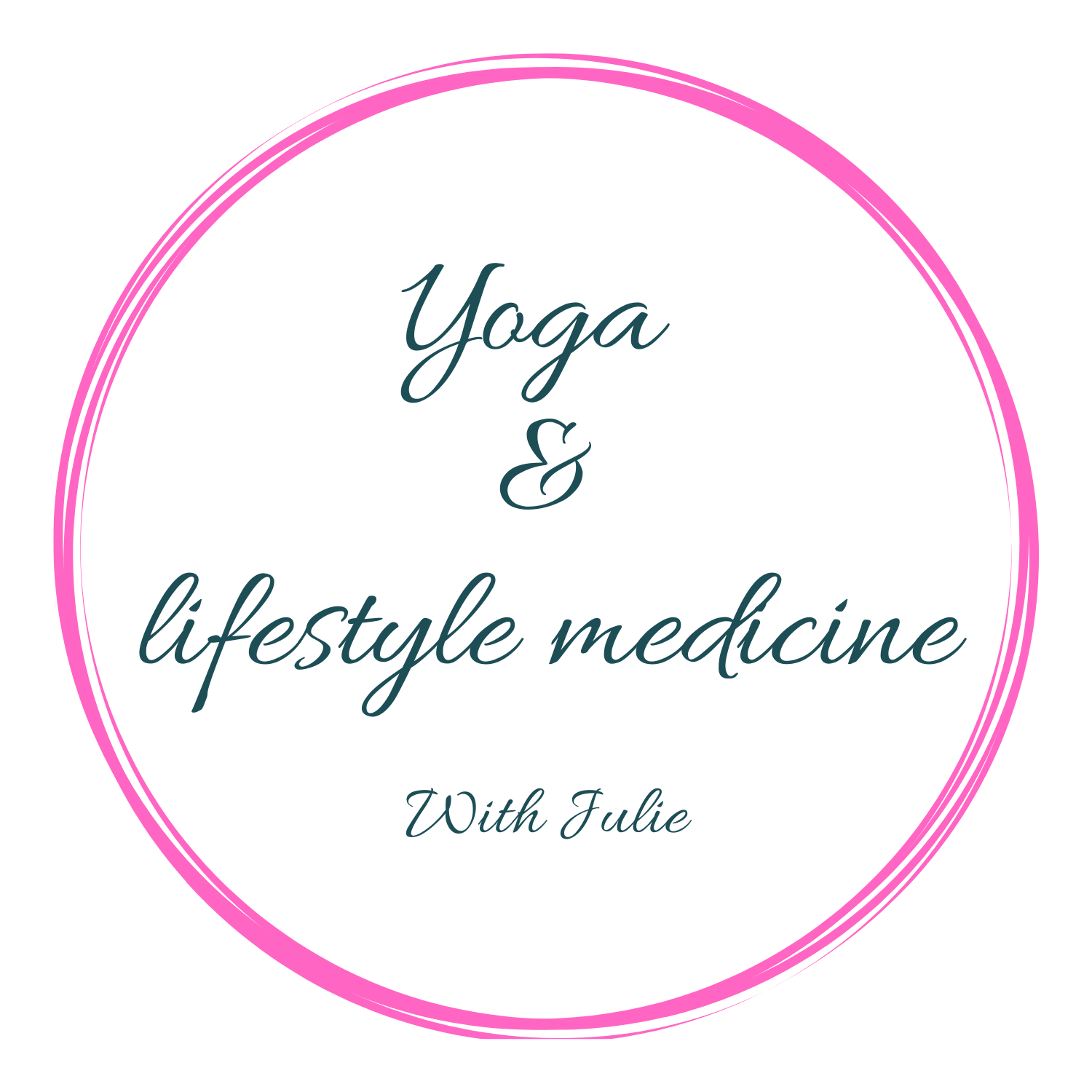Ayurveda uses preventive and curative therapies, the Panchakarma is one of those. It uses also other various methods for purification and rejuvenation.
Ayurveda is more than just a healing system; it is a science and a proper art of living that helps to achieve longevity. It can guide each individual in the right choice of diet, lifestyle, and exercise to restore balance in body, mind, and consciousness, thereby preventing disease from gaining a foothold in the system.


Panchakarma is a treatment program for the body, mind and consciousness, which cleanses and rejuvenates.
It is practiced individually to precisely meet the needs of one’s Ayurvedic constitution and specific disorders of the mind. It therefore requires observation and supervision.
The Panchakarma therapy principles
The treatment begins with pre-purification measures called Snehana and Svedana, then cleansing methods, Shodan are applied.
It is based on Ayurvedic principles that creation is made up of 5 main elements. Each of these 5 elements is present in greater or lesser proportions and includes a range of qualities that manifest themselves in a more or less obvious way in each individual and depending on the situation. The five basic elements are ether, air, fire, water and earth.
The combination of these elements constitutes the three doshas (tridosha): Vata, Pitta and Kapha, and their balance is unique to each individual.
- Vata: a combination of ether and air,
- Pitta: a combination of fire and water.
- kapha: a combination of water and earth, are called the tridosha.
These are the three humors or the three organizations of the body, which also derive from consciousness.
Each individual constitution and mind temperament is determined by the proportions of these three doshas at the time of fertilization meaning that when the embryo is formed, the constitution is determined.
When this doshic balance is disturbed, it generates disorders causing symptoms and eventually leads to disease.
Each individual constitution therefore has its own unique balance according to its own nature (vata, pitta and kapha or VPK).
This balance of VPK is the natural order. When this doshic balance is disturbed, it creates an imbalance.
Health is order; disease is disorder.
Order is the state of health, as defined by Ayurveda. It exists when the digestive fire (agni) is in a state of balance; bodily humors (vata, pitta and kapha) are in balance, the three waste products (urine, faeces and sweat) are produced and eliminated normally, the seven bodily tissues (rasa, rakta, mamsa, meda, asthi, majja and shukra/artava ) function normally, and the mind, senses and consciousness work harmoniously together.
When the balance of these systems is disturbed, the process of disease (disorder) begins.
The doshas according to their balance or imbalance:


Doshas and the elements
Vata (air+ether) in balance: great agility, dry hair and skin, thin body, creative, energetic, flexible, excitement, new experiences
Imbalanced vata: hypertension, constipation, weight loss, weakness, arthritis, anxiety, insomnia, digestive problems.
Pitta (fire+water) in balance: perfect digestion, luminous complexion, good appetite, precise, quick-witted, direct and frank.
Pitta out of balance: itching, indigestion, excessive body heat, burning sensations, irritable temper, arguments.
Kapha (earth+water) in balance: great endurance, wide and soft eyes, strong body, soft skin, loyal, patient, stable, understanding.
Kapha out of balance: oversleeping, overweight, suffers from asthma, depression, diabetes, resistance to change, stubborn.
Benefits of Panchakarma
- Eliminate toxins and toxic conditions from your body and mind.
- Restore your constitutional balance by improving your health and well-being.
- Strengthen your immune system and become more resistant to disease.
- Reverse the negative effects of stress on your body and mind, slowing down the aging process.
- Bring deep relaxation and a feeling of well-being.


Purvakarma : the pre-purification measures:
Before the purification processes begin, it is necessary to prepare the body to promote the elimination of toxins. These two procedures are called snehan and svedana.
Snehan is oil massage. The oil is applied all over the body with a specific massage to move toxins to the gastrointestinal tract. Oil massage also makes superficial and deep tissues soft and supple, helping to eliminate stress and nourish the nervous system.
Snehan is administered daily for three to seven days.
Svedana is sweating or perspiration. It is practiced every day immediately after the snehan. A herbal concoction can be added to the steam to further loosen the toxins from the individual. Svedana helps liquefy toxins to direct them into the gastrointestinal tract.
After three to seven days of snehan and svedana, the body is ready to receive the method or methods of panchakarma given according to the constitution and disorders of the individual.
Cleaning methods: shodanas
- Vamana
- Virechan
- Basti
- Nasya
- Rakta Moksha
Vamana: Vomiting Therapy
When there is congestion in the lungs causing repeated bouts of bronchitis, colds, coughs or asthma, the Ayurvedic treatment is therapeutic vomiting, vamana, to remove the kapha causing excess mucus. Often this also releases pent up emotions that have been held in the kapha areas of the lungs and stomach along with the accumulated dosha. Once the mucus is released, the patient will feel relief instantly. Congestion, wheezing, and shortness of breath are likely to go away and the sinuses will become clear.
Therapeutic vomiting is also indicated in chronic asthma, diabetes, chronic cold, lymphatic congestion, chronic indigestion and edema. After vamana, it is recommended to rest, fast, smoke certain herbal cigarettes, and not suppress natural urges (i.e. urination, defecation, gas, sneezing, cough). If vamana is administered correctly, the person should feel relaxation in the lungs, be able to breathe freely, have lightness in the chest, clear thinking, clear voice, good appetite and all symptoms of congestion will disappear.
Virechan: Purgation therapy
When excess bile, pitta, is secreted and accumulated in the gallbladder, liver and small intestine, it tends to cause rashes, skin inflammations, acne, chronic bouts of fever, vomiting of bile, nausea and jaundice. The Ayurvedic literature suggests in these conditions the administration of a therapeutic purgation or a therapeutic laxative. Purgatives help relieve excess pitta that causes biliary disorders in the body. In fact, purgatives can completely cure the problem of excess pitta. When purgatives are used, the patient should not eat foods that aggravate the overriding mood or unbalance the three humors.
Basti: Enema Therapy
Vata is a very active principle in pathogenesis (disease). If we can control vata through the use of basti, we have come a long way towards the root cause of the vast majority of disease. Vata is the main etiological (causal) factor in the manifestation of diseases. It is the driving force for the elimination and retention of feces, urine, bile and other excreta. Vata is mainly located in the large intestine, but bone tissue (asthi dhatu) is also a site for vata. Therefore, drugs administered rectally have an effect on asthi dhatu. The lining of the colon is related to the outer covering of the bones (periosteum), which nourishes the bones. Therefore, any drug administered rectally penetrates deeper tissues, such as bones, and corrects vata disorders.
Nasya : Administration nasale
The nose is the doorway to the brain and it is also the doorway to consciousness. The nasal administration of drugs is called nasya. An excess of bodily humors accumulated in the sinuses, throat, nose or head is eliminated through the nearest possible opening, the nose.
Prana, vital force in the form of nerve energy, enters the body through the breath carried out through the nose. It is found in the brain and maintains sensory and motor functions. Prana also governs mental activities, memory, concentration and intellectual activities. A dysregulation of prana results in malfunctioning of all these activities and produces headaches, convulsions, memory loss and reduced sensory perception.
Nasal administration, nasya, is therefore indicated for prana disorders, sinus congestion, migraines, convulsions and certain eye and ear problems. Breathing can also be improved by nasal massage. For this treatment, the little finger is dipped in ghee and inserted into the nose. The inner walls of the nose are slowly massaged, going as deep as possible.
This treatment will help to open the emotions. (The tissues of the nose are tender and for this application the nail must be kept short so as not to injure the delicate mucous membranes). Since most people have a deviated septum, one side of the nose will be easier to enter and massage than the other. The finger should not be inserted by force. The massage should be done by slow penetration, the finger moving first clockwise, then counterclockwise. In this way, the emotions stuck in the airways will be released. This treatment can be used morning and evening. This way breathing patterns will change as emotions are released and eyesight will also improve.
Rakta Moksha: Ayurvedic blood purification
Toxins present in the gastrointestinal tract are absorbed into the blood and circulate throughout the body. This condition is called toxemia, which is the root cause of repeated infections, hypertension, and some other circulatory disorders. This includes repeated attacks of skin disorders such as hives, rashes, herpes, eczema, acne, scabies, leucoderma, chronic itching or hives.
In these conditions, in addition to internal medication, elimination of toxins and purification of the blood are necessary. Rakta moksha is also indicated for enlarged liver, spleen and gout. Pitta is produced from the disintegrated red blood cells in the liver. Thus, pitta and blood have a very close relationship. An increase in pitta can pass into the blood, causing toxicity, and therefore many pitta-genic disorders. Drawing a small amount of blood from a vein relieves the tension created by pitta-genic toxins in the blood. Leeches have been used as an alternative to bloodletting. Bleeding also stimulates the spleen to produce anti-toxic substances that help boost the immune system.
Toxins are neutralized, resulting in a radical cure for many blood-borne diseases. Certain substances such as sugar, salt, yogurt, acid-tasting foods and alcohol are toxic to the blood. In the case of certain blood disorders, these substances must be avoided to keep the blood pure.
For rakta moksha treatment other than bloodletting, there are blood purification practices involving herbs, gemstone therapy, or colored water therapy. For any rakta moksha treatment or related alternative treatment, it is beneficial to refrain from consuming yogurt, salt, sugar, alcohol, marijuana, sour and fermented foods.
What lifestyle and diet during therapy


At each stage of panchakarma therapy, certain lifestyle and diet guidelines should be followed. It is important to rest and remain calm to receive the full benefits and effects of the therapy.
One therefore avoids all strenuous exercise, sexual activity, late nights, loud music, television and other stimulating experiences.
This is also a great time to observe one’s thoughts and experiences during this time.
Meals are designed to support the cleansing process. As the toxins return to the gastrointestinal tract, the power of digestion is further slowed down. Kitchari is one of the adequate food techniques, very easy to digest, which nourishes all the tissues of the body, and excellent for the regeneration of cells. It helps in the detoxification and cleansing process.
Kitchari is a seasoned mixture of rice and mung dal, and is the basis of the Ayurvedic way of life. Basmati rice and mung dal both have the qualities of being mild and refreshing with a sweet aftertaste. Together they create a balanced diet; an excellent combination of protein and is tridoshic.
Conclusion
Panchakarma is a very technical Ayurvedic treatment and requires the proper guidance of a highly trained and knowledgeable Ayurvedic practitioner.
It cannot be undertaken alone with information from an article or a book.
Panchakarma is an individual process personalized to one’s constitution, physical and mental disturbances, disease and therefore requires close observation and supervision.
To rejuvenate and cure, join me ine the Ayurvedic panchakarma retreat. all the details here
Om Dhanvantari Namah
References
Ayurveda and Panchakarma: Measuring the Effects of a Holistic Health Intervention
An integrated therapy approach for the management of obesity-associated disorders: A case report
Effect of Vasantic Vaman and other Panchakarma procedures on disorders of various systems
Efficacy of panchakarma in sandhivata w.s.r. to knee arthritis
Efficacy of virechana karma in the management of obesity and hypothyroidism: A case study
